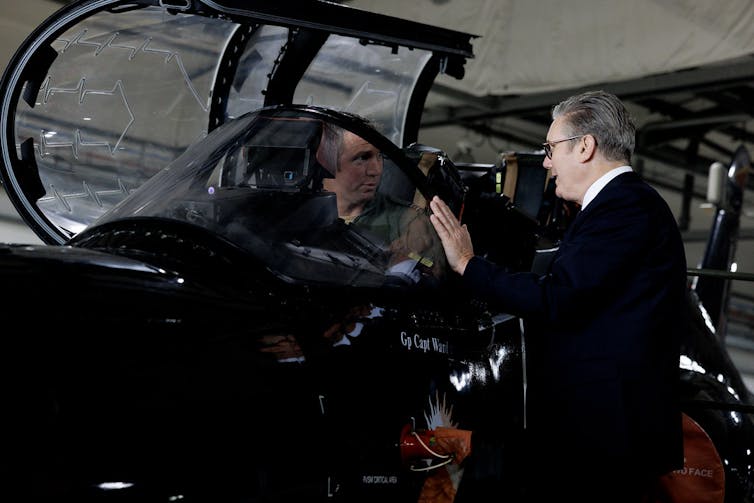Source: – By Issouf Binaté, enseignant-chercheur, Université Alassane Ouattara de Bouaké
Turkey is stepping up its influence in west Africa as the geopolitical and economic landscape in the region shifts. In Senegal, the state-owned Turkish Petroleum Corporation has entered a key partnership in the oil and gas sector. Meanwhile, Karpowership, a company providing electricity via floating power plants, now supplies energy to eight African countries. But Turkey’s not stopping there. As part of its soft power strategy, it is also winning hearts and minds through education and culture while deepening trade and security ties.
Historian Issouf Binaté, who has studied Turkey’s growing presence in west Africa, breaks down how Ankara is positioning itself as an alternative to both former colonial powers and newer global players competing for influence on the continent.
What drives Turkey’s growing influence in west Africa?
Turkey’s foreign policy in west Africa leans on two main pillars.
One is institutional power, driven by state-backed agencies (embassies, the religious affairs directorate Diyanet, and the economic cooperation agency (TIKA) .
The other is more grassroots, led by non-state actors such as religious foundations and NGOs.
These groups laid the groundwork for Turkey’s African expansion long before Ankara officially stepped in.
A key player in Turkey’s earlier outreach was the Gülen movement, named after preacher Fethullah Gülen (1941–2024). The Gülen movement pioneered Turkey’s soft power approach with “Turkish schools”, starting with the Yavuz Sultan Selim and Yavuz Selim-Bosphore high schools in Dakar in 1997.
Also at the end of the 1990s a network composed of Turkish business leaders and social activists under the Turkish Confederation of Businessmen and Industrialists, which claimed over 100,000 member companies, expanded Turkey’s influence across Africa. At that time, Turkey had only three diplomatic representations for the whole of sub-Saharan Africa.
The more recent contact with Africa comes at a time when western hegemony faces growing criticism from a new generation of Africans engaged in decolonial movements. Gülen-affiliated institutions now number 113, alongside religious and secular schools run by other groups like Mahmud Hudayi Vakfi and Hayrat Vakfi. Since the 2016 political rift between Gülen and President Recep Tayyip Erdoğan, these schools were gradually transferred to Maarif Foundation, Turkey’s state-run overseas education arm.
Back in 2003, Turkey had only 12 diplomatic missions across Africa. Today, that number has grown to 44, bolstered by Turkish religious foundations (like Mahmud Hudayi Vakfi and Hayrat Vakfi), NGOs, and entrepreneurs who have filled the gap left by the Gülen movement.
Another powerful player in Turkey’s Africa strategy is Turkish Airlines, now one of the top carriers on the continent. It is now flying to 62 airports in 41 African countries.
What role do west African students trained in Turkey play?
By investing in education, Turkey didn’t just open its doors to African students. It also planted the seeds for a long-term influence strategy. These students, and more broadly young African migrants trained in Turkey, are now among the key messengers of “Turkishness” back home.
In doing so, Ankara is following a familiar path once used by colonial powers. They used student mobility as a powerful tool for their diplomacy.
This policy of openness took several forms. As early as 1960, it welcomed students from non-self-governing territories in accordance with UN General Assembly resolutions.
Then, in the 1990s, Turkey continued this effort through a scholarship programme for African students, supported by the Islamic Development Bank. During this period, Turkey launched the Büyük Öğrenci Projesi (Great Student Project), which provided scholarships to international students.
Starting in 2012, this programme was re-branded as YTB (Yurtdışı Türkler ve Akraba Topluluklar Başkanlığı, or Directorate for Turks Abroad and Related Communities). It introduced reforms, including a digital application process for scholarships via an app on the YTB website. This shift caused a dramatic spike in interest. Applications soared from 10,000 to 155,000 between 2012 and 2020.
For non-scholarship students, Turkey simplified visa processes, reduced tuition fees, and offered other incentives. These measures contributed to a significant increase in the number of applicants to study in Turkey. As the number of universities in Turkey jumped from 76 to 193 between 2003 and 2015, the country became increasingly attractive.
By 2017, Turkey had become the 13th most popular destination for students from sub-Saharan Africa, according to Campus France (a platform that supports international students studying in France). By 2019, there were an estimated 61,000 African students studying in Turkey.
Now, nearly three decades into this strategy, many of these former students are stepping into new roles. They are taking over from Turkish entrepreneurs in fostering socioeconomic ties with Africa. They also act as bridges, promoting Turkish universities and supporting visitors in areas like medical and industrial tourism.
In Istanbul, some run cargo companies – some of them informal – that ship goods to Africa. Others are working to formalise these ventures and build long-term economic bridges. Groups like Bizim Afrika, a network of African Turkish-speakers, and the Federation of African Students in Turkey (founded in 2019), are playing key roles in shaping this next chapter of Turkey–Africa relations.
How is Turkey’s strategy in west Africa different from that of China or France?
In substance, Turkey’s strategy isn’t so different from that of France or China. It also carries traces of colonial thinking, even though its approach leans more on religious soft power like building mosques across Africa. Unlike France, which used force in its colonial past, Turkey is trying to gain influence through other means. It uses familiar tools: embassies, schools, cinema, security services, and development agencies.
However, Turkey has learned from the criticism faced by western powers at a pivotal moment in Africa’s global relations.
While access to Europe, the US and Canada has become more difficult due to stricter visa rules, Turkey has opened its doors. It eased visa procedures for African business people, expanded its universities, and promoted medical tourism.
Turkey has become a hub for several sectors. It’s a major centre for nose surgery (rhinoplasty), hair transplants, and textiles. Its textile industry now supplies traders at Makola Market in Accra, Adjamé’s Forum in Côte d’Ivoire, and the Grand Marché in Bamako.
Turkey has also capitalised on the security crisis in the Sahel, where France’s military presence has become controversial. It stepped in by selling Bayraktar TB2 drones and offering private security services to some governments.
Is this Turkish presence set to last?
Turkey’s presence in Africa is now visible in several symbolic ways. You can see it in Maarif schools, murals at Abidjan airport, the “Le Istanbul” restaurant in Niamey’s government district, or the National Mosque in Accra, modelled after Istanbul’s Blue Mosque.
Turkey’s engagement is a work in progress. But its outreach to Africa is already yielding results. Trade volume reached US$40.7 billion in 2022. The return of the first waves of African students trained in Turkey has shifted the dynamic. Cooperation no longer relies solely on Turkish business people and social entrepreneurs.
Even though African elites often speak English, French or Arabic, new voices are emerging. Young people trained in Turkey are beginning to find their place. Many work in import-export, construction, and even Islamic religious leadership. This trend points to promising prospects for long-term ties.
For Turkey, Africa represents a continent with major economic opportunities. Becoming a trusted partner is now a key goal. On the diplomatic level, Turkey gained observer status at the African Union in 2005 and has hosted Turkey-Africa summits in Istanbul since 2008.
This growing involvement suggests that Turkey’s role in Africa is likely to last. It will depend on the continent’s market needs, especially at a time when many African countries are rethinking their relationships with traditional western powers and international institutions.
![]()
Issouf Binaté does not work for, consult, own shares in or receive funding from any company or organisation that would benefit from this article, and has disclosed no relevant affiliations beyond their academic appointment.
– ref. Turkey is stepping up its influence in west Africa – what’s behind its bid for soft power – https://theconversation.com/turkey-is-stepping-up-its-influence-in-west-africa-whats-behind-its-bid-for-soft-power-256929





